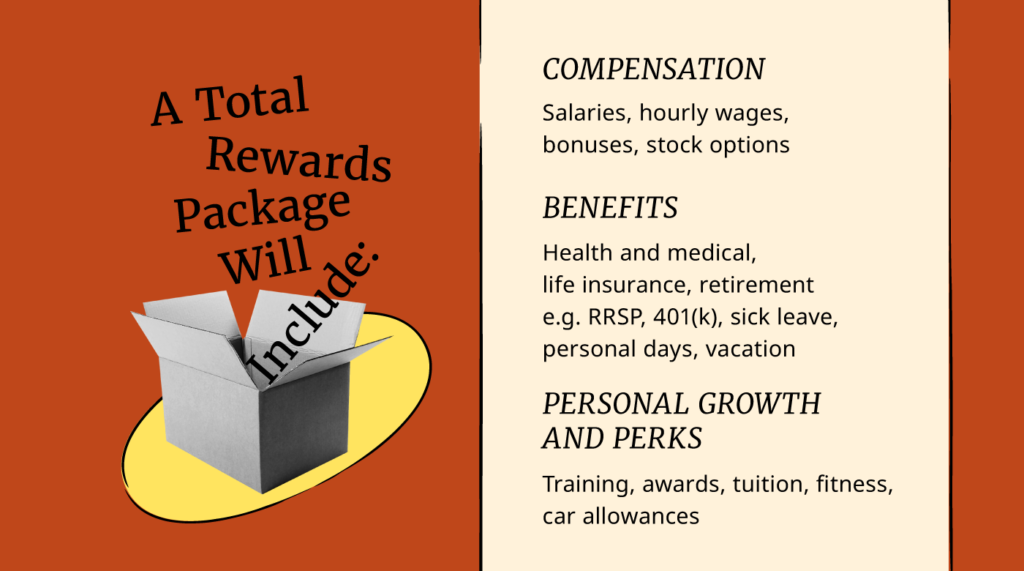You're a small business owner and your business is growing, you’re tired of working 12-hour days, seven days a week, and you’ve decided you need help.
Maybe it helps with those simple but time-consuming administrative tasks or with growing sales, or developing products. Regardless of who your new employee is and what they’ll be doing, you want to make sure you’ve covered all your bases, dotted all your I’s, and crossed all your t’s.
You’re a business owner ready to hire your first employee, and you don’t want to mess it up.
Let me start by offering this disclaimer: I’m not an employment lawyer, tax accountant, payroll specialist, or recruiter. (Yes, according to my mom I could have been any of these, but I chose a slightly different path in life.) However, I’ve been involved in enough hiring over the course of my career to know that it involves all manner of issues.
In this article, I’ve distilled a bunch of my experiences to this shortlist of simple must-do’s when it comes to hiring your first employee.
- Understand the costs of hiring (time and $$)
- Get professional help: find a good lawyer and accountant
- Understand the basics of employment law
- Recognize the various employment types
- Define the job: role, responsibilities, and rewards
- Set up a small business payroll system
- Recruit and hire the right person
Understand The Costs Of Hiring (Time And $$)
This may seem like an obvious thing to consider, but there are often many hidden or not-so-obvious costs to hiring your first employee.
Hiring an employee is an expensive undertaking. While there are ways to recruit without shelling out big bucks, the hiring process will cost you time and money.
According to Shaun Howe, a Partner at Canadian accounting firm MNP,

“When hiring employees, it is important that you are aware of the different costs associated with the employee, such as vacation pay, and employer portions of EI and CPP.”
- Shaun Howe, a Partner at Canadian accounting firm MNP
According to Glassdoor, the average US employer spends about $4000 and 24 days to hire a new person.
These numbers also don’t include all the other costs associated with hiring your first employee, such as:
- Training and onboarding time to get the new hire up to speed and engaged.
- Equipment and supplies, such as desks and computers.
- Technology solutions, such as applicant tracking systems and video conferencing subscriptions and onboarding software tools.
- Workspace, whether it’s an additional office or coworking space.
- Insurance fees, such as general business liability insurance.
- Business costs, such as legal and accounting costs to incorporate, draft employment agreements, and set up payroll.
The investment is usually worth it in the long run, but it’s something you should absolutely factor into your decision-making. As you consider the financial aspects of hiring your first employee, it's crucial to have a reliable system for managing salaries and benefits. Our guide on the best payroll software can help you make an informed decision.
Get Professional Help: Find A Good Lawyer And Accountant
This article touches on several of the legal and taxation issues you’ll face when hiring your first employee but doesn’t go into depth on how these issues might affect your business specifically.
As a business owner, having a good lawyer and accountant you can turn to could mean the difference between a successful first hire, and a disastrous one that ends up costing you more than what the professionals would have charged to help you avoid it.
Benefits of using a business lawyer
A lawyer who specializes in business law and has experience with startups and early-stage companies can help you hire your new employee in a variety of ways, including:
- Employment contracts
- Non-disclosure agreements (NDAs)
- Stock option program structuring and agreements
- Severance / termination packages
According to Jason Golbey, lawyer and founder of Golbey Law:

“A lot of risks, uncertainty, and future expense can be spared by having a good employment contract. For example, dealing with key issues early and properly, such as severance on termination, ownership of intellectual property, and non-solicitation of clients and employees, can save you a lot of money in the long run.”
- Jason Golbey, lawyer and founder of Golbey Law
Benefits of using an accountant
Using an independent accountant or professional accounting firm will cost you some $$, but could ultimately save you even more time and money down the road. They can assist you in a variety of ways, such as:
- Understand how to manage payroll.
- Correctly handle various tax withholdings (EI, CPP, etc.).
- Identify required tax forms (e.g. W-4 form,
- Understanding the financial implications of different corporate structures.
- Helping you develop new employee forms and documents.
- Finding appropriate employee tax forms.
It can sometimes be a challenge for small business owners to find the right accountant.
According to Shaun Howe:

“When picking an accountant, a business owner should look for someone that is [CPA] designated and technically proficient, and who they are comfortable communicating with to assist in making business and financial decisions for the company.”
- Shaun Howe, Partner at Canadian accounting firm MNP
Understand The Basics Of Employment Law
Lawyers are a fantastic resource for employment issues, but they can become an expensive resource if you rely on them too much through the new hire process.
There are many labor laws and legal obligations that apply to your first hire, and which you need to be aware of in advance, such as:
- Employee health and safety regulations
- Minimum wage requirements
- Equal employment and discrimination
- Minimum age requirements
- Hiring foreign workers
Employment laws and regulations - Canada
In Canada, the following organizations and pieces of legislation directly impact hiring your first employee:
- Canada Human Rights Act (federal law)
- Canada Federal Labour Standards (part III of the Canada Labour Code)
- Provincial Employment Standards (e.g. BC Employment Standards)
- Canada Revenue Agency (CRA)
- WorkSafeBC (worker's compensation coverage)
Many of these websites will also provide easy-to-read overviews and guides to the provincial and federal laws, making it easier for non-legal people to understand their obligations to employees.
Employment laws and regulations - United States
In the United States, there are several major laws set out by the federal government and the Department of Labor that govern things like minimum employee wages, workers' compensation insurance, and equal employment.
A summary can be found here, and includes:
- Fair Labor Standards Act
- Occupational Safety and Health (OSH) Act
- Federal Employees' Compensation Act (FECA)
Recognize The Various Employment Types
It’s important to decide whether you’re hiring an employee or an independent contractor because it will affect a number of other legal, taxation, and corporate decisions you need to make. You’ll also need to decide how much of their time you’ll need, and for how long.
Employee vs independent contractor
A full run-down of the various differences between an employee, contractor, and freelancer, including the pros and cons of each, can be found here.
Part-time vs. full-time, and permanent vs. temporary
If you’ve decided that hiring an employee is the right direction for you, you’ll then have to decide whether you need that person full-time (usually defined as working greater than 30 hours per week) or part-time, and whether you need a permanent or temporary (also known as “term”) employee.
Between these two decisions, you have four possible combinations of employee types. Determining what type of employee you want to hire is important because it affects things like payroll taxes and employment regulations. WorkBC offers a good summary of the various employment types recognized by the government in BC.
Define The Job: Role, Responsibilities, And Rewards
At this point you’ve decided whether to hire an employee or independent contractor, the number of hours a week you would like them to work, and how long you want to hire them for. Now it’s time to pull together a job description and define the following:
- Roles and responsibilities of the position;
- Experience, qualifications, and qualities of the successful candidate; and
- The rewards package you’re prepared to offer.
Going through each of these in detail is beyond the scope of this article, but here are a few tips to get you started.
Draw inspiration from similar postings
Search for similar positions on job sites such as Indeed, LinkedIn, and ZipRecruiter to help you draft the job description. Avoid directly copying other company postings, but use them as inspiration for your own. If you come across a posting that makes your skin tingle and wants to give up your own job to apply, figure out what it is, and use it.
Consider diversity, inclusion, and belonging
This is more important and relevant than ever, particularly in light of recent events and the Black Lives Matter (BLM) movement. Lorie Corcuera and the team at Spark Creations provide a host of resources related to this topic that will help and educate you on the importance of creating cultures and workplaces that cultivate diversity, inclusiveness, and belonging.
Figure out what the rewards package will look like
Deciding on the workers compensation or hourly rate you’re prepared to pay is just one piece of your total rewards strategy.

Be careful when you give out equity
Many startup and early stage companies may not have the financial resources for some of the total rewards pieces listed in the previous section, and will instead lean more heavily on offering equity in the company.
Jason Golbey with Golbey Law offers this advice:

“We find that a lot of early-stage companies give out equity too freely to early employees, in order to justify lower wages. While equity is a good motivator and may be essential for that key employee, the same motivation can be achieved with options, with a reasonable cliff and vesting period. You want to strike a balance to keep those key early employees enthused, both by fair wages and future potential in the growth of the company.”
- Jason Golbey, lawyer and founder of Golbey Law
Related read: How To Write A Zinger Job Description
Set Up A Small Business Payroll System
Managing payroll is a lot more than just giving money to employees in exchange for work. It’s critical to have a proper payroll system ready to go before you hire your first employee.
Shaun Howe, a CPA / CA with MNP, also offers these words of wisdom:

“When paying employees, it is very important to stay on top of payroll withholdings, and the corresponding government remittances, as it is the employer’s responsibility to withhold and remit the appropriate amounts to the government by the due date. Also, be sure to keep accurate and up to date records of payroll withholdings throughout the year, as they will be required when filing T4 slips for each employee at the end of the year.”
- Shaun Howe, Partner at Canadian accounting firm MNP
A few steps you'll need to complete as part of payroll setup include:
- Set up Employer Identification Numbers (EIN) (USA)
- Open a Payroll Deductions account under your existing Business Number (BN) (Canada)
- Gather the new employee's Social Insurance (Canada) or Social Security (USA) number
- Complete various federal tax, and provincial or state tax forms (e.g. TD1)
Recruit And Hire The Right Person
At this point you understand the various laws and regulations that outline your obligations to employees, you have professional help ready when you need it, and you’ve got a clear picture of the job you’re hiring your first employee for.
You have everything set up and ready to go, so now it’s time to start the hiring process!
Recruiting, selecting, and actually hiring the right job candidate isn’t easy.
You need to post the job, sort through job applications, go through interview questions, and do reference and background checks. Only once all this is done can you make the job offer and get the new hire started on their first day.
To help you get started check out our article on How to Hire Employees. You’ll find some useful tips and advice on finding your first employee quickly and inexpensively.
What Do You Think?
What other steps should someone take before hiring their first employee? What parts of the new hire process have you found to be the most challenging or difficult? When it comes to hiring, what types of tasks do you try to do yourself vs. outsourcing, and why?
For areas you find tricky or too time consuming, you can always choose to outsource your HR function or parts of it. For advice on this check out Outsourcing HR Benefits, Strategies, And Considerations.
Don't forget how important being insured is and how it can help your organization to be covered. Here's an article that covers the topic: What Is Employee Benefits Liability Coverage?
Some further resources to help you with hiring and retaining talent:
- 10 Best Applicant Tracking Systems For Recruiting
- Candidate Sourcing Tips To Help You Find The Best Talent
- Employer Branding: Where To Start And How To Keep It Authentic
- How to Create An Attractive Careers Page to Get Better Applicants
- How To Hire Remote Employees And Tap Into Global Talent
- How To Build A True Employee-First Company


